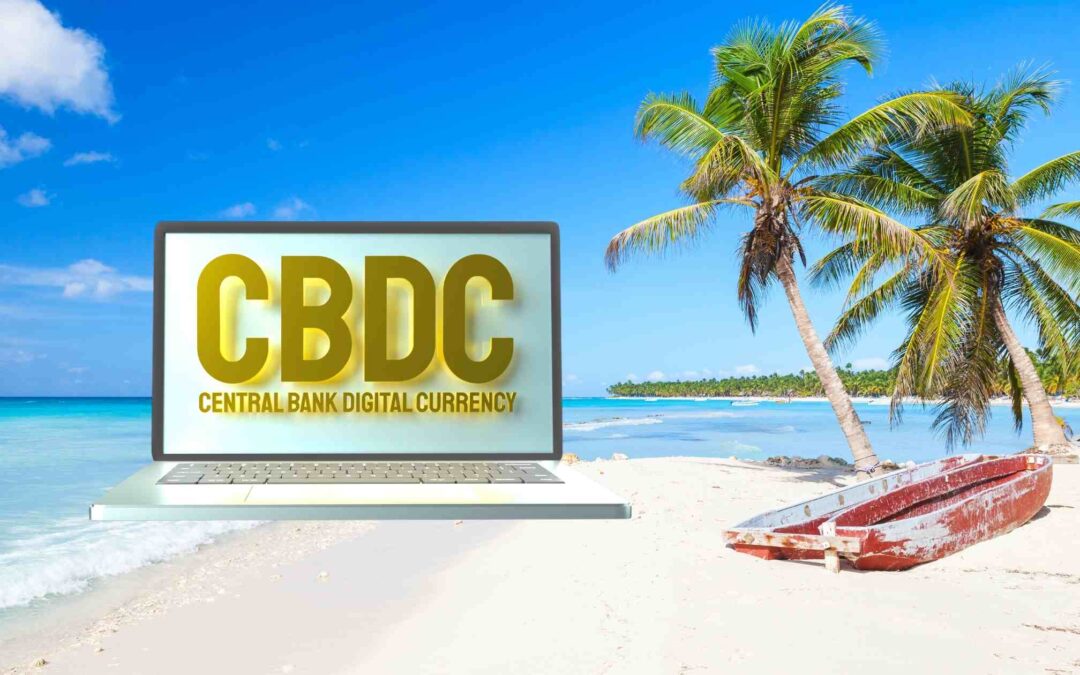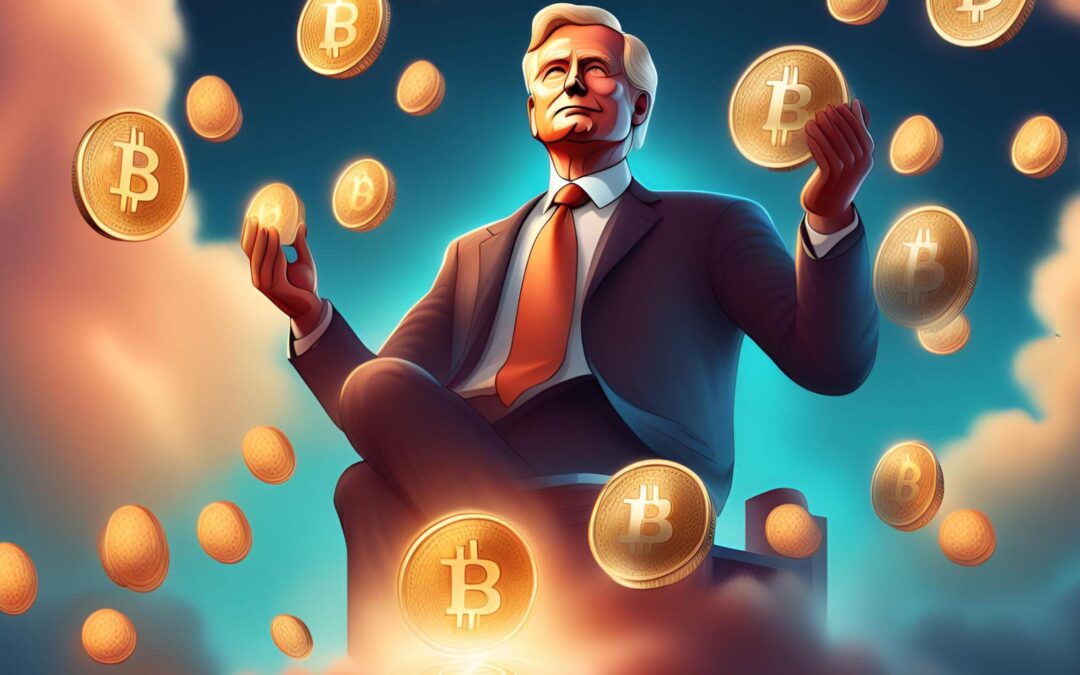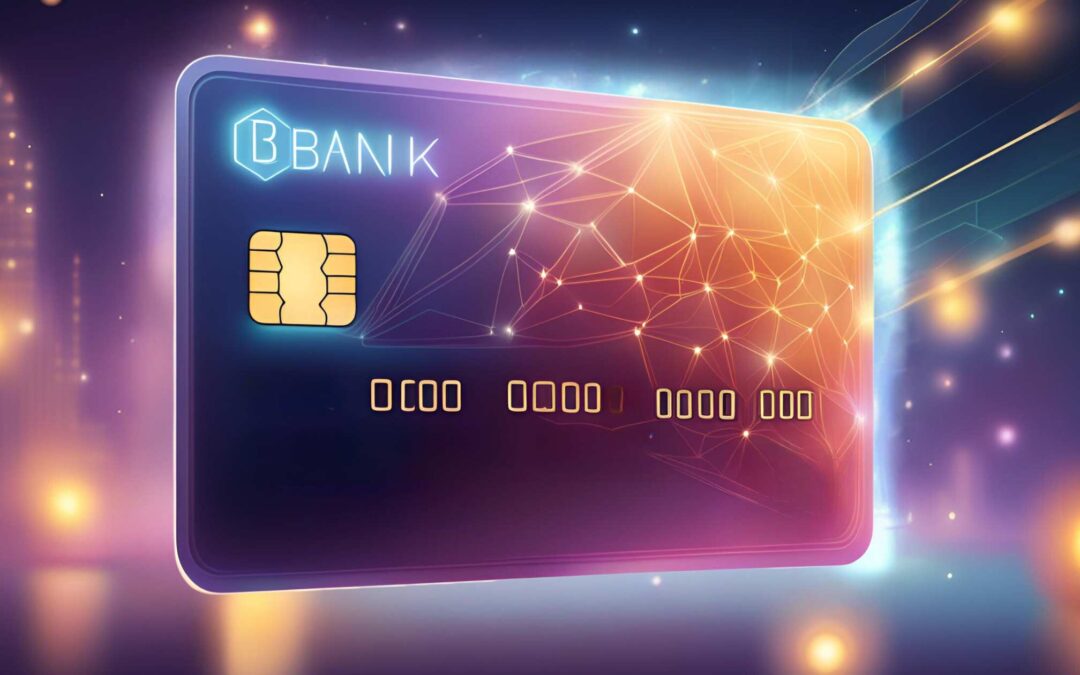
by Iulia Vasile | Jun 2, 2023 | News
Payment apps may lack protection: A recent warning from the US Consumer Financial Protection Bureau emphasizes that the FDIC might not protect money stored in mobile payment apps. Customers could be concerned about whether their funds are insured, highlighting the risks associated with these platforms.
The US Consumer Financial Protection Bureau (CFPB) has advised Americans to keep their money in a secure, insured bank account rather than in an unprotected app.
The Bureau expressed concern over the growing use of peer-to-peer payment apps, which also handle cryptocurrency transactions, due to the increased risk of losing money if things go wrong.
The public has become more aware of the protection offered by the Federal Deposit Insurance Corporation (FDIC). This comes after the failure of several cryptocurrency platforms and a banking crisis that resulted in the loss of a huge amount of customer money.
Despite this, the CFPB warns that a lot of money is still being held in these payment apps, which aren’t covered by the FDIC.
Payment services don’t offer insurance for your funds
The CFPB says that many peer-to-peer apps like PayPal, Venmo, Cash App, Apple Pay, and Google Pay have features that work much like bank accounts, although Meta Pay doesn’t have that feature.
The companies behind these apps actually like it when you keep your money in their apps because they can then use your money for their own investments (within legal limits), while they hardly ever pay you any interest on the money you store. However, there is a risk involved for these companies, as they could potentially lose money on the investments they make.
The CFPB explains that if your money is in an FDIC-insured account and something goes wrong, whether you’re covered by their insurance is only decided after the fact.
Plus, the insurance only covers the bank’s failure. It doesn’t cover the failure of the payment app, which is usually controlled by state laws and not watched over by the federal government. Most of the time, these state laws are meant for transferring money, not storing it.
So, if you have money in PayPal or Venmo, it could be protected by this pass-through insurance when it’s in their partner banks, but not if they’ve used your money for investments. Also, it might not be clear to you where your money is actually kept.
More and more, these mobile payment services are letting you handle cryptocurrencies. But remember, payment apps may lack protection and cryptocurrencies aren’t insured, even though services like PayPal and Venmo let you keep crypto in your accounts.
In October 2022, the EU published a report to describe the risks of crypto assets investments.
According to the report. “The pseudonymity that prevails in crypto-asset markets makes it virtually impossible to assess the creditworthiness or aggregate exposures of participants.” The paper also talks about the leverage offered by crypto exchanges to individual investors, which can raise up to 125x.
While some jurisdictions try to adopt regulations to protect investors (e.g., MiCA), these regulations often fall short in the face of the ever-expanding crypto industry.
All in all, keeping your crypto investments is a very risky business, and you should be aware of the risks.
Why aren’t crypto insurance policies good enough yet?
Insurance companies still need to improve their crypto insurance plans. Right now, these plans don’t cover everything. To fully protect all your crypto assets, you might have to combine different plans. One might cover the loss of your private key, another might cover errors in smart contracts, and you might need a third in case your wallet company goes under.
What are the risks of investing in cryptocurrencies?
Cryptocurrencies are pretty risky. Their prices can go up and down much more than things like stocks. Future prices could also be impacted by changes in laws, which might even make cryptocurrencies worthless. Plus, cryptocurrencies are always at risk from cyber threats like hacking and theft.
Are cryptocurrencies insured by the FDIC?
No, they’re not. The FDIC insures normal bank accounts up to $250,000, but it doesn’t protect cryptocurrencies at all. If you’re not from the US, you should check your country’s financial authority and see their conditions for insured investments and their limitations.
Can I get insurance for my cryptocurrency investments?
Yes, you can get insurance that offers limited protection against cryptocurrency theft. But these policies often only cover specific situations. They generally don’t protect you against losses due to market changes, hardware damage or loss, sending cryptocurrency to someone else, or problems with the blockchain technology that supports the asset. If you want more comprehensive coverage, you’ll probably need to buy multiple policies.

by Iulia Vasile | Dec 8, 2022 | News
In Hong Kong, virtual asset service providers will have a new licensing system, which will require them to adhere to strict anti-money laundering (AML) guidelines.
Hong Kong’s legislative body has approved a new amendment to the anti-money laundering and terrorist financing system. The legislation now includes virtual asset service providers.
On June 1, 2023, this new legislation will go into effect, and it will establish a licensing system for virtual asset service providers. Crypto exchange service providers will be subject to the same legislation that currently applies to traditional financial institutions.
Virtual exchanges that want to open a Hong Kong business must follow strict AML(Anti-Money Laundering) guidelines and comply with investor protection laws before being granted a license to operate. Hong Kong, unlike other regulators around the globe, has used the FTX crash to reduce regulatory risks associated with centralized exchanges.
Regulators around the globe have been criticized for failing to protect retail investors after the FTX crypto exchange collapse. A growing demand has emerged to bring crypto exchanges under the law and to require strict AML and investor protection.
Hong Kong Monetary Authority to impose regulations
Hong Kong has actively worked toward the establishment of a well-thought regulatory framework for its nascent cryptocurrency market. The Hong Kong government published a policy in October entitled “Policy Declaration on the Development of Virtual Assets.” It included a regulatory framework as well as risk-based regulatory guidance. To evaluate and improve the technology underlying virtual assets, the government suggested several pilot projects.
Investors may also benefit from some protection regulations. This nation has become the leader in the urgent issue of investor protection because of the recent legislation amendment.
At a recent conference, Eddie Yue, chief executive of the Hong Kong Monetary Authority, suggested that there might soon be investor protection regulations in the country.
Banks are discussing the future of FinTech
Central bank governors from all over the world have attended a conference in Thailand to discuss the role and future of central banks in the face of evolving financial technology. The conference was hosted by both the Bank of Thailand and the Bank for International Settlements.
Panel discussion on digitalized monetary systems featured Eddie Yue (chief executive of Hong Kong Monetary Authority), Changyong Rhee (governor of the Bank of Korea), Adrian Orr (governor of the Reserve Bank of New Zealand), Cecilia Skingsley (Bank for International Settlements) discussing the rise of digital assets, central banks digital currencies, and the potential risks associated with this new technology.
The chief of the Hong Kong Monetary Authority discussed the benefits and innovations of blockchain technology, as well as its potential impact on central banks. Yue stated that stablecoins and CBDCs would offer more efficient and economical ways to transact in the long term. He noted, however, that any new technology comes with certain risks. These risks could be operational.
Yue pointed out that blockchain is decentralized by its very nature. It is, therefore, much more difficult to mitigate on-chain risk. Regulators should therefore focus on activities off-chain. He explained:
“We can start with regulating off-chain activities like regulating virtual asset exchanges. Hong Kong will soon introduce not just AML (anti-money laundering) aspect but also investor protection.”
This was before the Hong Kong government issued the regulations for crypto exchanges, which align with the international consensus on regulating stablecoins.
Changyong Rhee (the Bank of Korea governor) was less optimistic about blockchain technology’s future, particularly in the monetary sector, in light of recent crypto contagions. He stated that he wasn’t sure if “we are actually seeing the benefits of this technological advancement recently.”
“I was more positive before, but after seeing the Luna, Terra, and now the FTX issues. I don’t know [if] we will see the real benefit of this new technology, at least for monetary policy,” said Rhee.

by Iulia Vasile | Nov 11, 2022 | News
The Bahamas-based company, FTX.com crypto exchange, announced Friday (November 11, 2022) that the crypto exchange had filed for bankruptcy protection in the United States.
Sam Bankman-Fried, the founder and CEO of FTX, has also resigned but said he would assist with an orderly transition. John Ray III will be the new CEO. Ray seems to be the same person who oversaw Enron Corporation’s bankruptcy.
According to Ray, FTX employees will feel the pressure in the near future: “In the short-term, we have some long and hard work ahead.” He also described the bankruptcy filing as “the beginning of a journey forward.”
Respective bankruptcy filings stated that FTX US (and Alameda Research) had between $10 billion to $50 billion in liabilities, as well as a similar range of assets. They also estimated that the funds would be available for distribution to unsecured creditors.
Why did FTX collapse?
This is the context that will help you understand this story. This includes the unexpected crisis of confidence caused by revelations about Sam Bankman Fried’s accounting practices, the shock at Bankman Fried’s reputation as a golden boy, and the complex role played by Binance and Changpeng Zhao, its founder in the crisis.
Let’s start with the background story of Sam Bankman Fried and his other company, Alameda Research, which played a major role in this series of unfortunate events.
At the beginning of November 2022, Alameda was holding around $5.8 billion out of its $14.6 billion assets in FTT, FTX’s exchange token.
Based on leaked documents, this finding was shocking because of the close relationship between Alameda & FTX. Both were established by Bankman-Fried. There has been considerable anxiety about the nature and extent of their fraternal relationships. This raises questions about the open-market, real-world value of FTT tokens that are held in reserve by affiliated entities.
Negative speculation about financial institutions can become a self-fulfilling prophecy. It can trigger withdrawals from a feeling of uncertainty and lead to liquidity problems.
But simple facts can be enough to cause a bank run. FTX token and Alameda have a history of close ties. This led to a mass exodus on November 8th. According to internal messages, Reuters saw $6 Billion in withdrawals on the exchange before things turned sour. What’s more, at the time, FTX exchange has an internal balance of only 1 BTC. Meanwhile, the exchange’s bitcoin balance reached 36 BTC, but this is still minute compared to the half a million BTC held by Binance or Coinbase.
Bankman-Fried’s team began to search for acquisition partners in a rush and approached a range of potential partners just before Binance was involved.
It is still unclear why FTX would want to be rescued even if there was such a rush for exits. Users were promised that the exchange would not speculate on cryptocurrencies in their accounts. If that policy had been followed, then there shouldn’t have been a pause in withdrawals or a balance sheet gap to fill. Coinmetrics analyst Lucas Nuzzi has provided evidence that FTX transferred funds in September to Alameda, possibly as a loan to cover Alameda’s losses.
Alameda’s vast FTT-linked assets seemed to confirm fears about the stability of Bankman-Fried. The token’s market value decreased by 90% between November 7 and November 10.
FTX announced that it had temporarily suspended all crypto withdrawals late in the evening on November 8, following the announcement of a tentative agreement with Binance.
According to a press release, the FTX.com entity, as well as FTX USA, Alameda Research, and “approximately 13 additional affiliated companies,” has filed for Chapter 11 bankruptcy proceedings. Chapter 11 bankruptcy proceedings can be filed by companies that hope or expect to be able to restructure their operations. This is in contrast to Chapter 7 bankruptcy which only liquidates assets.
Companies that file for Chapter 11 bankruptcy can continue to operate their daily operations.
Bankman-Fried posted a tweet after the bankruptcy and apologized. He said, “Hopefully things can find a way to recover. Hopefully this can bring some amount of transparency, trust, and governance to them.”
The release stated that FTX Digital Marketplaces, FTX Australia and FTX Express Payment are not included.
Ray stated that the FTX Group’s valuable assets can only be efficiently managed in an organized, collaborative process. “I want to assure every customer, employee, creditor, contract partner, stockholder, investor and other stakeholder that this effort will be conducted with diligence, thoroughness, and transparency.”
He said that events have been “fast-moving,” and the new team has just begun.
The FTX bankruptcy sent shockwaves on the crypto market
Bitcoin immediately plunged to $1,000 after the bankruptcy news and fell to $16,500 in just minutes.
Bankman-Fried reported FTX’s “liquidity” issues earlier in the week.
Firstly, it was stated Binance had offered to purchase the company. Then, Justin Sun of Tron announced a deal to support TRX-based tokens. FTX halted withdrawals, but FTX US withdrawals remained unchanged. FTX announced that certain jurisdictions had initiated partial withdrawals.
According to a bankruptcy filing, the complete list of companies includes Alameda, various local holdings, and Blockfolio. Quoine and over a dozen FTX entities are also included.
“I was shocked to see that FTX listed BTC Africa S.A. and other AZA Finance entities today,” stated Elizabeth Rossiello in a statement. She is the CEO and founder of BitPesa as well as AZA Finance. To be clear, AZA Finance entities aren’t affected by the FTX bankruptcy. We are taking steps to rectify the erroneous court files,” she said, adding that “in its disorganized haste, FTX erroneously listed their entities in bankruptcy filings.” Here’s the AZA Finance statement regarding the FTX bankruptcy statement.
The crypto market is interconnected
The collapse of the Three Arrows Capital hedge fund has shown that crypto is extremely interconnected. Evidence suggests that Alameda’s financial problems began after it lost half a million dollars to Voyager Digital. Voyager Digital was later purchased by SBF, as it had been insolvent after Terra collapsed.
Unfortunately, as more people are attracted to the crypto and blockchain space, they are drawn by big marketing campaigns to these massive centralized exchanges. the industry has re-created the centralized financial system, including “bank runs” and all. Instead of interfacing directly with peers and blockchains, people now store their money on centralized exchanges. Instead of trusting financial protocols that are not reliable, they place their faith in Wall Street-respected megalomaniacs.
The Securities and Exchange Commission (SEC) also took notice of the FTX and has ongoing investigations. Gary Gensler, Chairman of the SEC, almost gloated about this moment, noting the “toxic mixture” at FTX. He repeated the familiar line that cryptos are securities and should be under his agency’s supervision. Gensler also noted that the industry had been “significantly non-compliant” and that exchanges should “come into and talk to us.”
It is notable that FTX.US, the independent wing of SBF’s trading empire, seems to be solvent. It could all go down tomorrow, but it seems that SBF wouldn’t have done the same shenanigans using FTX.US user funds as he did with the parent company, no matter how tired he was.
Yet, it is important to mention the role that U.S. crypto regulation played in the FTX downfall. Coinbase’s CEO Brian Armstrong argued on Twitter that the stringent-yet-unclear regulatory landscape pushed people like Terra’s Do Kwon and Bankman-Fried overseas, where oversight is lax, and taxes go unpaid. According to Gary Gensler, 95% of crypto trading occurs outside the U.S.
Crypto may fail because it is not regulated
Cryptocurrency was created to allow people to be their own bank by allowing them to be independent and responsible for their finances. Instead, Three U.S. regulators – the Commodity Futures Trading Commission, the Securities and Exchange Commission, and the Department of Justice – have intensified their investigations into FTX. Some of these investigations had been ongoing for months.
In an interview with CNBC, Gensler may be correct in stating that there are rules that could protect crypto investors. Armstrong is protecting his interests here, while Sen. Elizabeth Warren (D.Mass.) and others are calling for tighter regulation. Gensler and Armstrong are calling for tighter regulation on U.S. exchanges. While more explicit regulations are essential, they must be followed. Because crypto is not a country-specific currency, regulators who make it too burdensome will only be able to create the next Terra-based in Singapore or Bahamas-based FTX. Armstrong said that it was absurd to punish U.S. companies like this.

by Iulia Vasile | Sep 21, 2022 | News
Bankers in the Caribbean are facing difficult times. Like many other small economies, these 35 countries face dollarization, dependence on foreign trade, and remittances.
De-risking, a common banking practice, is also causing serious problems. It is no surprise that the region is taking more interest than ever in digital currency adoption.
Carmelle Cadet is the founder and CEO at Emtech. She is a native Haitian and has worked with central banks in Ghana and Haiti. Her company is also part of the Digital Dollar Project Technical Sandbox Program, which is exploring aspects of the United States central bank digital currency (CBDC). She believes that establishing a functioning CBDC in the Caribbean is “a difficult task.”
Banks in the Caribbean: The Risks
The Financial Action Task Force (FATF) lists countries under special surveillance for money laundering and other illegal activities. The so-called grey list was only four, but it seems that the entire region is affected. It is important to do extra research when large international banks offer services like settlement to small local banks in these countries, a process known as correspondent relationships.
International banks are more expensive to do business with if they have done additional due diligence. Banks will often cut ties with banks located in gray-listed countries to avoid paying a higher cost. This is known as de-risking. Many Caribbean countries lost half of their correspondent relationships. This has severe consequences for their economies as well as their societies.
On September 14th, the United States House of Representatives Financial Services Committee held a hearing entitled “When Banks Leave: The Effects of De-Risking in the Caribbean and Strategies for Ensuring Financial Access.” The hearings were attended by Mia Amor Mottley, Prime Minister of Barbados, and Keith Rowley, Prime Minister of Trinidad and Tobago.
According to prime minister Mottley, the regional banking services are accessed with difficulty: “We spend weeks, and businesses that come into our region spend weeks and months, just to open a bank account.”
On Sept. 24, Bahamian Prime Minster Philip Davis raised the topic of de-risking before United Nations General Assembly ten days after the Congressional hearings. He asked, “Why are all the countries being targeted small and vulnerable and former colonies of European states?”
The Bahamas is not currently on the gray list.
Are CBDCs the solution?
The Atlantic Council CBDC tracker shows that three CBDCs were launched within the Caribbean region: Bahamas’ Sand Dollar; Jamaica’s JamDex; and the Eastern Caribbean Central Bank DCash. These CBDCs are located in seven of eight member countries.
The council has listed Haiti’s Digital Gourde under development. Cadet stated that Emtech and HaitiPay presented a proof of concept for a CBDC to the Haitian Embassy in Washington, Washington, on May 5.
Cadet was born in Haiti and immigrated to America in her youth. She was an executive at the IBM Blockchain division when the Bahamas requested proposals for the Sand Dollar. In 2019, as Haiti was going through a roadshow to develop its CBDC, Cadet stated, “If the Bahamas can do that, why not Haiti?” Carmelle Cadet quit IBM to start Emtech.
After the Haiti earthquake, the first financial technology companies were established in Haiti. In 2010, technologies that relied on mobile wallets gained the lead. Jean Baden Dubois, governor of the Haitian Central Bank, stated that mobile phone penetration was 60% in 2008 and is likely to rise in 2021.
Emtech proposed that the CBDC would work online, using mobile phone data. Cadet stated that the rollout of a Haitian CBDC would include device distribution through a partnership with a charity organization. She said that emerging economies are known for using telecommunications to support CBDC functions rather than data networks.
Dubois stated that the Haitian Central Bank saw the CBDC as a way to improve policy efficiency and transparency. This would allow the FATF gray-listed country to meet Anti-Money Laundering/Combating the Financing Of Terrorism standards.
Cadet stated that “dollarization undermines central bank mission of stability.” But by using CBDCs to make cross-border payments, the liquidity and visibility of the reserve would be improved.
But not all CBDC emerging markets are the same
Cadet stated that there are many ways in which CBDC designs are different for emerging markets from those for developed markets. As they strive to settle in real-time, developed markets can afford to slow down, while emerging markets have a greater need for CBDCs.
She said that emerging markets have less baggage, which allows fintech to thrive. While commercial banking is easier in developed markets, the CBDC has more legacy systems that can be integrated.
It is unclear, however, how successful CBDCs are in the Caribbean.
The Sand Dollar, which was widely considered to be the first CBDC, launched in 2020. In July 2022, there were 30,000 digital wallets and about 845 merchants who accepted them. It is promoted by the Bahamian government regularly.
DCash was introduced in April 2021 but crashed in January, and it was down for almost two months. A spokesperson for Grenada-based conglomerate Geo. F. Huggins & Co., the first company to accept a DCash payment, said during the outage that the CBDC represented a “minimal” portion of its sales.
Cadet stated that her company was in talks with the Haitian Central Bank “to understand the licensing risk” about a year prior to the proof-of-concept presentation. She has been in contact with the bank ever since. According to her, the company is currently waiting for the central bank to issue a request for proposals for vendors.

by Iulia Vasile | Aug 18, 2022 | News
The U.S. government decided to act upon the Ethereum blockchain, and it’s imposing a ban on Tornado Cash, the cryptocurrency tumbler.
At the beginning of August 2022, the U.S. Treasury Department announced that it had banned Tornado Cash, the famous crypto-mixing service. In a move likely to have wide-reaching implications for crypto, all American “persons” are prohibited from interfacing with the open source protocol.
Circle, the issuing entity behind USDC stablecoin, immediately removed 38 addresses from their transaction history that were connected to Tornado. Anecdotal evidence suggests that bans are being enforced by other platforms and companies.
By instating this bad, the Office of Foreign Assets Control has created made it a crime to use Tornado Cash. It is now more difficult to maintain transactional secrecy for Ethereum, the most widely used blockchain. Platforms and individuals need to assess their exposure and take steps toward avoiding regulatory action. However, it’s still unclear whether or not the regulators will enforce such a ban and how blockchain protocols will comply.
What is Tornado Cash?
Tornado Cash is an open-source project that allows crypto users to hide their transactions histories from the public. It is claimed by the U.S. government that Tornado Cash was used to launder more than $103.8 million through hacks of Nomad Token Bridge and Horizon Harmony Bridge earlier in the summer and was also used by Lazarus Group, a North Korean hacker group.
The U.S. Treasury sanctioned Tornado Cash for its use by Lazarus Group, a North Korean hacker group. Also, it cited the laundering of more than $103.8 million through hacks of Nomad Token Bridge and Horizon Harmony Bridge earlier in the summer.
Since its 2019 launch, Tornado Cash was used to launder more than $7 billion worth of cryptocurrency.
Soon after the U.S. Treasury announcement, the Discord server for that group vanished, and unknown persons also took down the forum on Tornado Cash’s community website. A member of Tornado Cash’s developer group was also taken into custody in the Netherlands by law enforcement.
Who uses Tornado Cash?
Instead of pursuing identifiable bad actors or targeting hackers, the government has placed a ban on the protocol. Elliptic, an analytics firm, claimed it had found $1.5 billion worth of illicit funds through ransomware fraud, hacks, and hacks.
Chainalysis, the blockchain analysis company, released a report that claimed that the use of crypto-mixers hit an all-time high monthly level in April 2022. This was after $51.8 million had been laundered through different platforms.
Tornado is also an important component of the Ethereum money stack. While this wasn’t the only method to anonymize transactions on blockchain, or the only coin tumbler used, it was the most widely used tool. The vast majority of applications supporting ETH will have exposure to the mixing service. Even Ethereum co-founder, Vitalik Buterin, has admitted to having used Tornado Cash before donating money to Ukraine in the spring of 2022.
But a government can’t really ban a blockchain protocol
But as with any smart contract deployed on a blockchain, it can’t be shut down by any authority. Although the use of the Tornado Cash smart contract has been deemed a criminal action, the ruling can’t actually stop anyone from using it or even re-deploying its open-source code on a different blockchain.
Surely, there have been some reactions to the ban. Some Tornado Cash users have been sending small amounts of crypto to celebrities’ crypto owners. The issue is that anyone who knows your public wallet address (which is not hard to find) can send you transactions, even a transaction from Tornado Cash, and there’s no way to refuse a transaction. In this case, there can be innocent people that might have wallets that can be tied to the banned protocol – but are they really to be blamed?
While some platforms such as Circle and MakerDAO are trying to follow the rules, it is clear that blockchain financial apps can’t exist by following the archaic regulations of governments.

by Iulia Vasile | Jun 13, 2022 | News
JPMorgan plans to develop a way for decentralized finance (DeFi) developers to harness the yield-generating potential non-crypto assets.
What are tokenized assets?
Asset tokenization refers to the process where an issuer creates digital tokens of a physical asset. These digital tokens are created on the blockchain. This way, the ownership of the tokenized asset is immutable.
Tokenization allows fractional ownership as well as proof-of-ownership. Companies worldwide are already using blockchain technology for tokenizing almost any asset. This includes traditional assets such as bonds, stocks, commodities, and real estate property, and even exotic assets such as racehorses, celebrities, and sports teams. Most tokenize-able assets fall into one of the following categories:
- Asset. Anything that can be converted into cash.
- Equity: Shares can be tokenized, and can be purchased on stock exchanges.
- Investment Funds. These tokens can be used to represent an investor’s share of the fund. Services. Tokens are a way for investors to buy goods and services from the supplier.
The benefits of asset tokenization are:
- Increase liquidity
- Fair prices
- Reduced costs (management, operational)
- Transparent process
- Secure identity
How will JPMorgan tokenize real-world assets?
Tyrone Lobban, from JPMorgan’s Onyx Digital Assets, described the bank’s institutional-grade DeFi plans in detail and pointed out the value of tokenized assets.
Lobban stated that tokenizing U.S. Treasury’s money market fund shares could be used to provide collateral for DeFi pools. He stated that the overall goal was to get these trillions of assets into DeFi so we can use these new mechanisms of trading, borrowing, and lending – all at the scale of institutional assets.
However, institutional DeFi is generally imposing strict KYC (know-your-customer) restrictions on crypto’s permissionless lending pool. This is the general policy across all projects, including Aave Ark and in a newly announced project that involves SCB (Siam Commercial Bank) through the Compound treasury. Aave Ark is a permissioned liquidity pool specifically designed for institutions to maintain regulatory compliance in the decentralized finance (DeFi) space.
JPMorgan plans to include the tokenization of traditional assets on a larger scale. Through Onyx Digital Assets, they aim to bring bank-grade DeFi to life. The first component is the collateral settlement system, which is blockchain-based. As of May 2022, this system was extended to include tokenized versions of BlackRock’s money-market fund shares. This mutual fund invests in cash and high-liquid short-term debt instruments. This type of application to the Onyx Digital Assets blockchain is settled using the bank’s digital token, JPM coin, which has seen $350 billion in trading volume.
The second component needed for the tokenization of traditional assets is Project Guardian. This is a recent pilot that is being led by the Monetary Authority of Singapore and includes JPMorgan, DBS Bank and Marketnode. It tests institutional-friendly DeFi using permissioned liquidity pools that are made up of tokenized bonds and deposits.
DeFi’s ventures will use public blockchains. They have a permissioned structure that is similar to Fireblocks and Aave Arc. Lobban pointed out that verification of customer information in Project Guardian is done by large financial institutions rather than DeFi platforms or crypto-native protocols. For instance, a JPMorgan trader must prove that he is authorized to trade on behalf of the Wall Street bank.
How will tokenized bonds work?
They will work similarly to the way lending and borrowing work now on DeFi, but at a larger scale. Let’s say a bank has $100,000 worth of XYZ tokenized bond, but it needs to borrow money temporarily. It deposits $100,000 as collateral and locks it on the blockchain, in a smart contract. They can borrow up to $75,000 but must pay interest.
Multiple depositors may want to earn additional interest on tokenized cash. They deposit millions of dollars in a liquidity pool, and they earn interest on the $75,000 borrowed.
The algorithmic calculation of the interest rate for borrowing is based on supply/demand. The interest rate on borrowing will be lower if tokenized cash is being lent out in small amounts. However, borrowers who have significant demand for the loan will pay a higher rate. The interest rate and loan to collateral ratio should be affected by the bond’s risk rating.
W3C verifiable credentials
JPMorgan has been quietly exploring digital identity within the context of digital assets and blockchain for the past two-and-a-half years.
W3C verifiable credentials are an innovative approach to permissioned DeFi that uses digital identity building blocks.
Verifiable credentials (VCs) can be used to represent information that may be found in physical credentials such as a passport, license, or new things like ownership of a bank card. They offer many advantages over traditional credentials, including interoperability and increased privacy.
The head of Blockchain Launch at Onyx, Tyrone Lobban, stated that verifiable credentials are needed to prove identity. This is a different model than the Aave model. Verifiable credentials can be used to give access to these pools at scale without having to keep a whitelist of addresses. Verifiable credentials don’t need to be stored on-chain. This means that you don’t have to pay for gas prices or write this type of information to the blockchain.
Lobban stated that JPMorgan is still deciding which DeFi platforms it will use and with what counterparties, but it will be one of the most recognized offerings. They haven’t decided yet, but it will be battle-tested with high TVLs (total value locked).
Lobban stated that “If we can put this identity layer in front of DeFi that enables KYC-based access, then each of those protocols should just naturally be able to support institutions without necessarily having to make too many changes to what they’re doing,”
We still don’t have answers to these questions, and institutions might have to create separate permissioned pools. But maybe some of the existing protocols can be modified to suit the institution’s needs. There’s still research to be made.
















